19.01.2022
Rocket Lab Readies First 2022 Electron Launch, BlackSky Adds Another Mission to Manifest
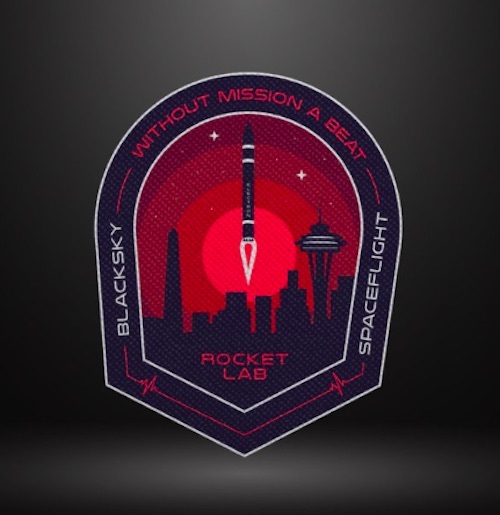
This 24th Electron launch is the latest in a multi-launch deal with Spaceflight Inc. for BlackSky, which has secured an additional dedicated mission on Rocket Lab’s 2022 launch manifest following multiple successful missions last year.
Long Beach, California. – Rocket Lab USA, Inc (Nasdaq: RKLB), a leading launch and space systems company, has today announced the launch window for its first Electron mission in 2022, a dedicated mission for BlackSky (NYSE: BKSY) through global launch services provider Spaceflight Inc.
Electron is scheduled to launch the “Without Mission A Beat” mission from Rocket Lab Launch Complex 1 in New Zealand during a launch window that opens February 4, 2022 UTC. The “Without Mission A Beat” launch will be the fifth and sixth satellites delivered to space for BlackSky by Rocket Lab in the past three months. This dedicated mission will be Rocket Lab’s 24th Electron launch and first mission of 2022. Rocket Lab will not be attempting to recover Electron for this mission.
While this next mission was due to be the final launch in a series of back-to-back missions for the company as part of a multi-launch deal actioned last year, Spaceflight has since commissioned an additional sixth launch for BlackSky on Electron to take place in 2022. That dedicated mission will continue BlackSky’s rapid business expansion by deploying another pair of Gen-2 Earth-imaging satellites to a precise location in low Earth orbit for its growing satellite constellation.
Rocket Lab CEO Peter Beck says: “This next mission is part of the largest number of satellites BlackSky have committed in a single deal to a launch provider, and we’re proud to be their trusted partner to help grow their constellation. BlackSky adding another mission to the Rocket Lab manifest is further confirmation of Electron’s status as the dedicated small launch champion, and we’re ready and eager to deliver these missions for BlackSky in the weeks to come.”
These upcoming BlackSky missions begin a busy year of Electron launches for Rocket Lab, including more bulk dedicated launches for government and commercial satellite operators, other singular dedicated and rideshare missions, and Rocket Lab’s mission to the Moon for NASA on the upcoming CAPSTONE mission scheduled to launch from New Zealand in the first half of the year.
Quelle: RocketLab
----
Update: 25.03.2022
.
Rocket Lab Confirms Next Electron Launch Window Opens for BlackSky April 1, 2022 UTC; Provides Update on Effect to Prior Q1 Revenue Guidance
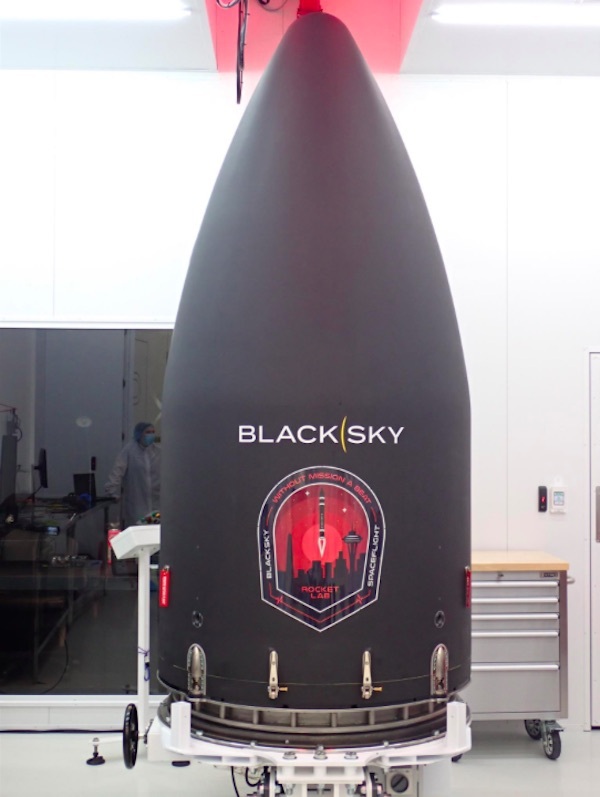
LONG BEACH, Calif.--(BUSINESS WIRE)-- Rocket Lab USA, Inc. (Nasdaq: RKLB) (“Rocket Lab”), a leading launch and space systems company, has today announced the launch window for its next Electron mission, a dedicated mission for BlackSky (NYSE: BKSY) through global launch services provider Spaceflight Inc., begins April 1, 2022 UTC. This launch window opening in April rather than March is weather related and will result in this mission and its related revenue being recognized in Rocket Lab’s fiscal Q2 2022, versus in fiscal Q1 2022 as was previously anticipated at the time Rocket Lab provided Q1 2022 financial guidance in conjunction with its Q4 2021 preliminary earnings release on February 28, 2022. As a result, Rocket Lab is updating its expected Q1 2022 revenue outlook from the range of $42 million to $47 million previously provided on February 28, 2022, to approximately $40 million.
The “Without Mission A Beat” launch is scheduled to lift off from Launch Complex 1 Pad A carrying a pair of BlackSky rapid-revisit, high-resolution Earth-imaging satellites to low Earth orbit, which will expand BlackSky’s constellation to 14 satellites. Rocket Lab has delivered the majority of BlackSky’s constellation to orbit on Electron missions since 2019.
“Without Mission A Beat” will be Rocket Lab’s 25th Electron launch and will bring the total number of satellites launched by the company to 112. Rocket Lab will not be attempting to recover Electron for this mission.
Rocket Lab CEO Peter Beck says: “We’re looking forward to again providing BlackSky and Spaceflight with another dedicated Electron mission that delivers the flexibility they need to meet the unique requirements of BlackSky’s capacity-on-demand constellation. We’re proud to continue our partnership with them and look forward to helping them grow their constellation with this next mission.”
“Without Mission A Beat” launch details:
- Launch Window Opens: April 1, UTC
- Launch vehicle: Electron
- Customer: BlackSky through Spaceflight Inc
- Launch site: Rocket Lab Launch Complex 1, Pad A
- Number of Payloads: Two
- Destination: 430km circular low Earth orbit
- Electron Recovery Mission: No
+ FORWARD-LOOKING STATEMENTS
This press release contains certain “forward-looking statements” within the meaning of the Private Securities Litigation Reform Act of 1995, Section 27A of the Securities Act of 1933, as amended, and Section 21E of the Securities and Exchange Act of 1934, as amended. All statements, other than statements of historical facts, contained in this press release, including statements regarding our strategy, future operations, future financial position, projected costs, prospects, plans and objectives of management, including without limitation Q1 2022 guidance, are forward-looking statements. Words such as, but not limited to, “anticipate,” “aim,” “believe,” “contemplate,” “continue,” “could,” “design,” “estimate,” “expect,” “intend,” “may,” “might,” “plan,” “possible,” “potential,” “predict,” “project,” “seek,” “should,” “suggest,” “strategy,” “target,” “will,” “would,” and similar expressions or phrases, or the negative of those expressions or phrases, are intended to identify forward-looking statements, although not all forward-looking statements contain these identifying words. These forward-looking statements involve a number of risks, uncertainties (many of which are beyond Rocket Lab’s control), or other assumptions that may cause actual results or performance to be materially different from those expressed or implied by the forward-looking statements contained in this press release, including risks related to the global COVID-19 pandemic, including risks related to government restrictions and lock-downs in New Zealand and other countries in which we operate that could delay or suspend our operations; delays and disruptions in expansion efforts; our dependence on a limited number of customers; the harsh and unpredictable environment of space in which our products operate which could adversely affect our launch vehicle and spacecraft; increased congestion from the proliferation of low Earth orbit constellations which could materially increase the risk of potential collision with space debris or another spacecraft and limit or impair our launch flexibility and/or access to our own orbital slots; increased competition in our industry due to rapid technological development and decreasing costs; technological change in our industry which we may not be able to keep up with or which may render our services uncompetitive; average selling price trends; failure of our launch vehicles, spacecraft or components to operate as intended either due to our error in design in production or through no fault of our own; launch schedule disruptions; supply chain disruptions, product delays or failures, design and engineering flaws; launch failures; natural disasters and epidemics or pandemics; changes in governmental regulations including with respect to trade and export restrictions, or in the status of our regulatory approvals or applications; or other events that force us to cancel or reschedule launches, including customer contractual rescheduling and termination rights, and the other risks detailed from time to time in Rocket Lab’s filings with the Securities and Exchange Commission (the “SEC”), including under the heading “Risk Factors” in Rocket Lab’s Annual Report on Form 10-K for the fiscal year ended December 31, 2021, which was filed with the Securities and Exchange Commission on March 24, 2022, and elsewhere (including that the impact of the COVID-19 pandemic may also exacerbate the risks discussed therein).
These forward-looking statements are based on Rocket Lab’s current plans, expectations and beliefs concerning future developments and their potential effects. Although we believe that we have a reasonable basis for each forward-looking statement contained in this press release, there can be no assurance that the future developments affecting Rocket Lab will be those that we have anticipated and we may not actually achieve the plans, intentions or expectations disclosed in our forward-looking statements, and you should not place undue reliance on our forward-looking statements. Moreover, we operate in a very competitive and rapidly changing environment. New risks emerge from time to time. It is not possible for our management to predict all risks, nor can we assess the impact of all factors on our business or the extent to which any factor, or combination of factors, may cause actual results to differ materially from those contained in any forward-looking statements we may make. You should read this press release with the understanding that our actual results may be materially different from the plans, intentions and expectations disclosed in the forward-looking statements we make. All forward-looking statements are qualified in their entirety by this cautionary statement. The forward-looking statements contained in this press release are made as of the date of this press release, and we do not assume any obligation to update any forward-looking statements, whether as a result of new information, future events or otherwise except as required by applicable law.
Quelle: Rocket Lab
----
Update: 2.04.2022
.
Rocket Lab to deploy two more BlackSky imaging satellites
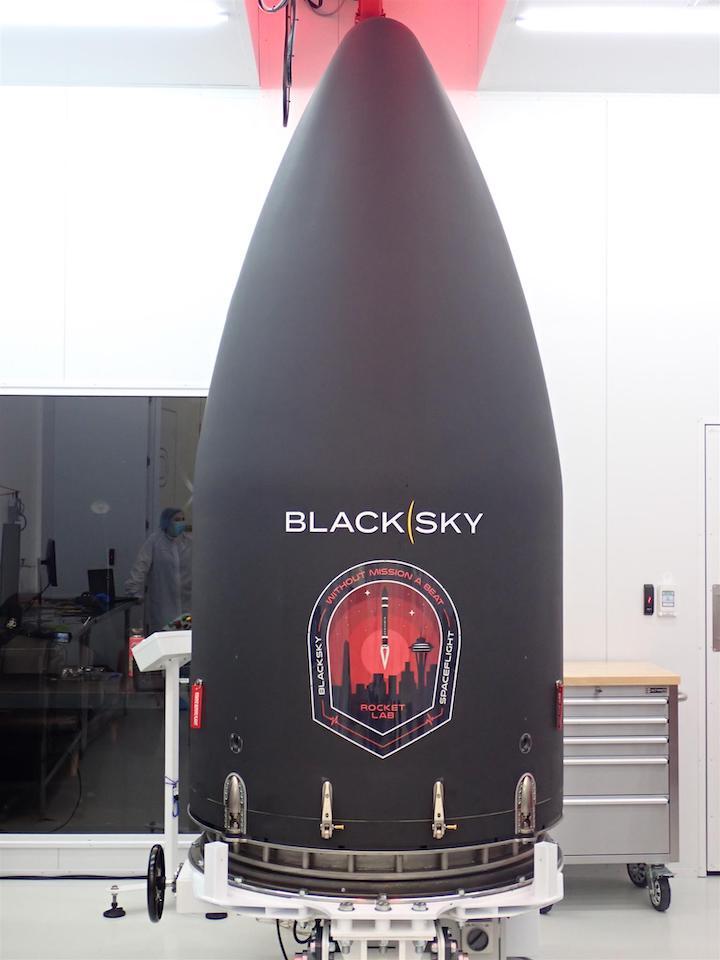
Rocket Lab will launch a mission from New Zealand on Saturday to place two more small optical imaging satellites into orbit for BlackSky, the U.S. remote sensing company.
The two satellites will ride a Rocket Lab Electron launch vehicle into orbit, targeting an altitude of 267 miles (430 kilometers), to join BlackSky’s growing remote sensing fleet.
Launch of the Electron rocket is scheduled for 8:10 a.m. EDT (1210 GMT) Saturday, or 1:10 a.m. local time in New Zealand on Sunday. The mission will take off from Launch Complex 1A, one of two pads at Rocket Lab’s privately-operated spaceport on Mahia Peninsula on the North Island of New Zealand.
The 59-foot-tall (18-meter) Electron rocket — sized to haul small payloads into space — will head east from the launch pad, targeting a mid-inclination orbit with the two BlackSky imaging satellites.
The launch was delayed for unspecified reasons from earlier in the year at the request of BlackSky. Rocket Lab shuffled its schedule and launched a different mission Feb. 28. The launch Saturday will be Rocket Lab’s second flight of the year.
Rocket Lab and BlackSky announced a multi-launch agreement agreement last year. The mission Saturday will be Rocket Lab’s fourth dedicated mission for BlackSky, each carrying two satellites in an arrangement made through the small satellite launch broker Spaceflight.
“We’re looking forward to again providing BlackSky and Spaceflight with another dedicated Electron mission that delivers the flexibility they need to meet the unique requirements of BlackSky’s capacity-on-demand constellation,” said Peter Beck, Rocket Lab’s founder and CEO. “We’re proud to continue our partnership with them and look forward to helping them grow their constellation with this next mission.”
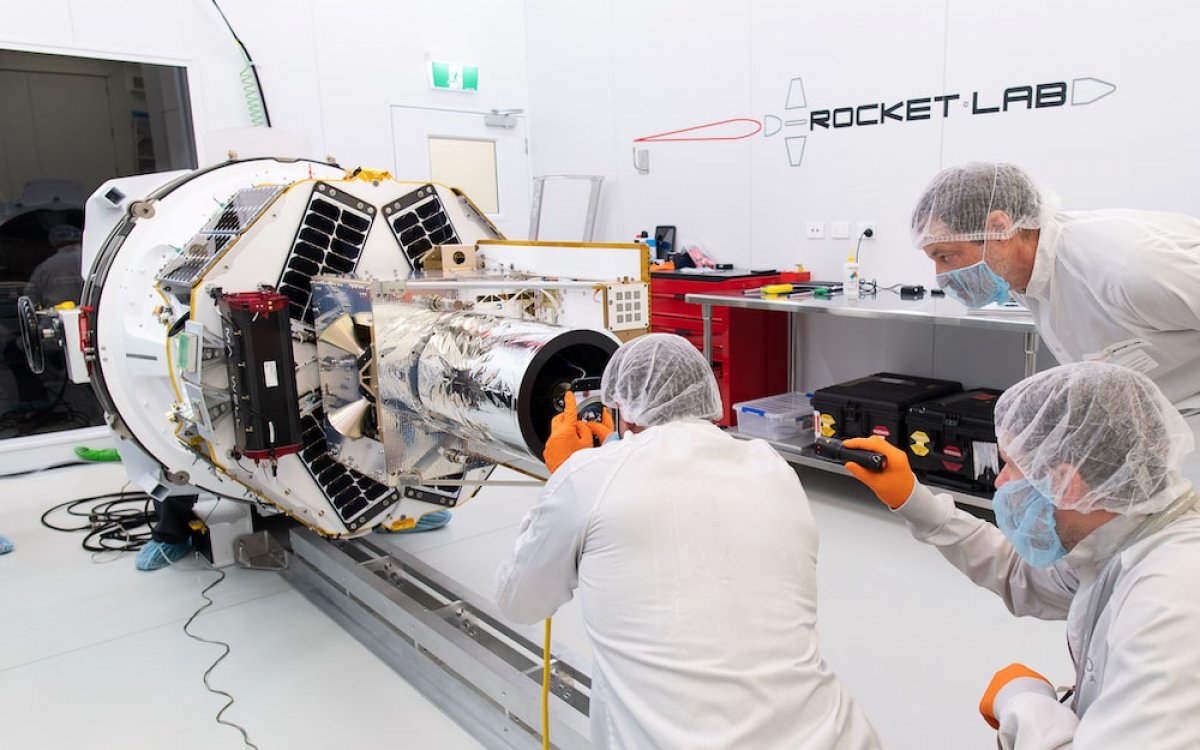
Producing more than 50,000 pounds of thrust, the Electron’s kerosene-burning first stage will steer the rocket on a course east from the New Zealand coastline. The booster will shut down and detach two-and-a-half minutes after liftoff to fall into the Pacific Ocean.
Rocket Lab does not plan to recover the Electron booster on Saturday’s mission.
A single Rutherford engine on the second stage will ignite to lob the twin BlackSky satellites into a preliminary parking orbit. During the six-minute second stage burn, the Electron rocket will shed its clamshell-like carbon fiber composite nose cone and swap batteries powering the engine’s pumps.
The Electron’s second stage will release a kick stage about nine minutes after launch. The kick stage will fly halfway around the world before igniting its Curie engine to place the BlackSky satellites into an orbit targeted at an altitude 267 miles, with an inclination of 42 degrees to the equator.
The BlackSky payloads are scheduled to deploy from the kick stage about an hour after liftoff.
Each BlackSky satellite weighs about 121 pounds (55 kilograms). The satellites are built by LeoStella, a joint venture between BkackSky and Thales Alenia Space, a major European satellite manufacturer. LeoStella’s production facility is located in Tukwila, Washington, a suburb of Seattle.
BlackSky, with offices in Seattle and Herndon, Virginia, is deploying a fleet of small remote sensing satellites to provide high-resolution Earth imagery to commercial and government clients.
One big customer for BlackSky, with offices near Seattle and in the Washington, D.C., metro area, is the U.S. military and intelligence agencies. BlackSky has agreements to sell commercial imagery to NASA, the National Reconnaissance Office and the National Geospatial-Intelligence Agency.
Going into this weekend’s mission, BlackSky has launched 13 commercial optical Earth observation satellites since 2018, following a 2016 launch with the company’s first technology demonstration spacecraft.
Quelle: SN
+++
Rocket Lab - Without Mission A Beat Launch

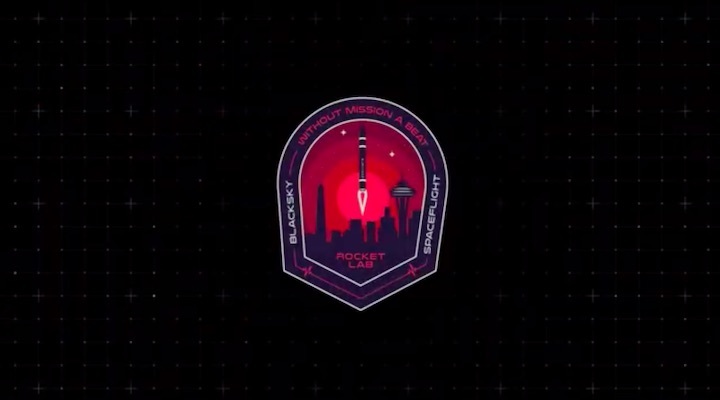

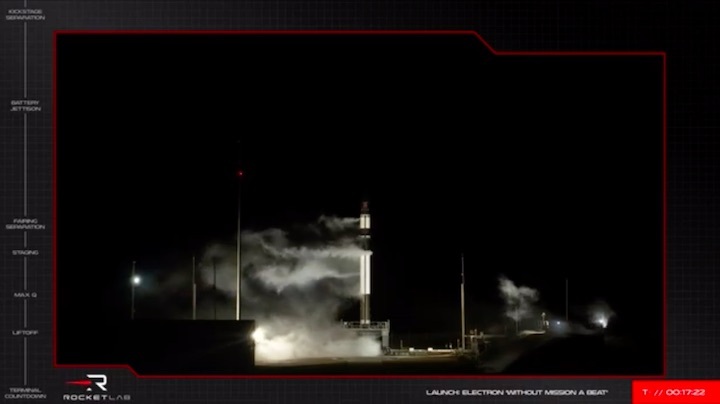
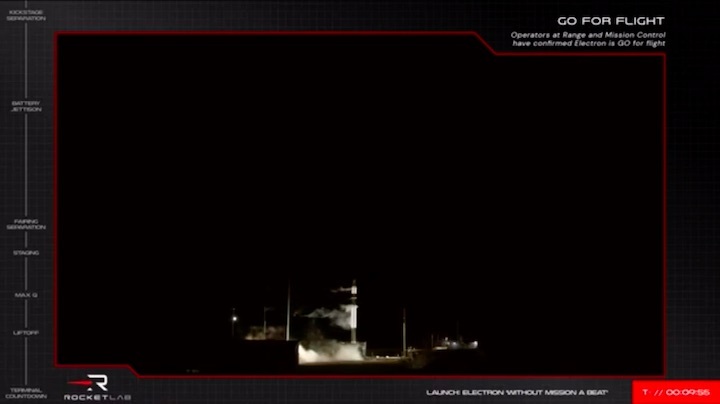
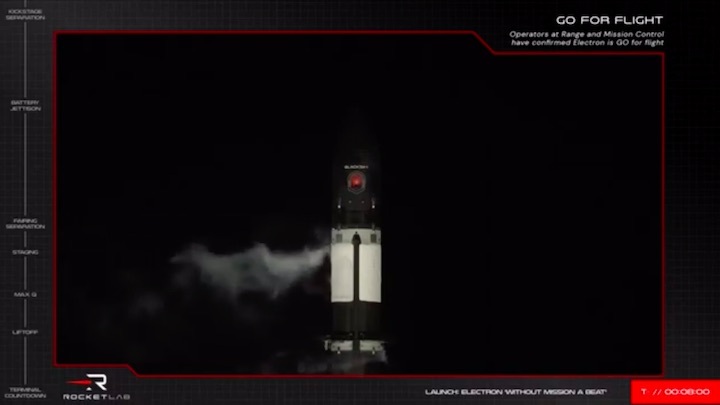
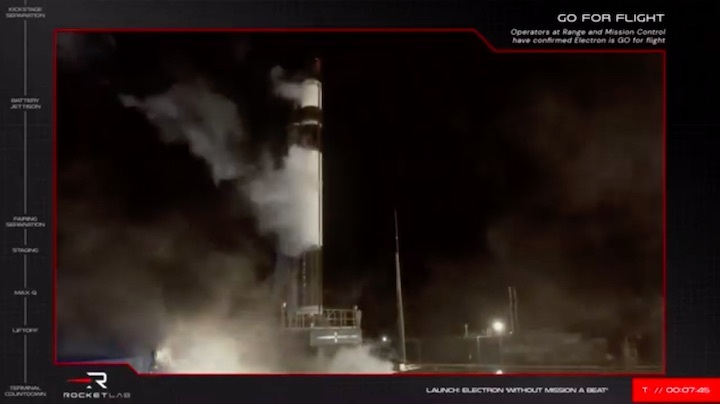
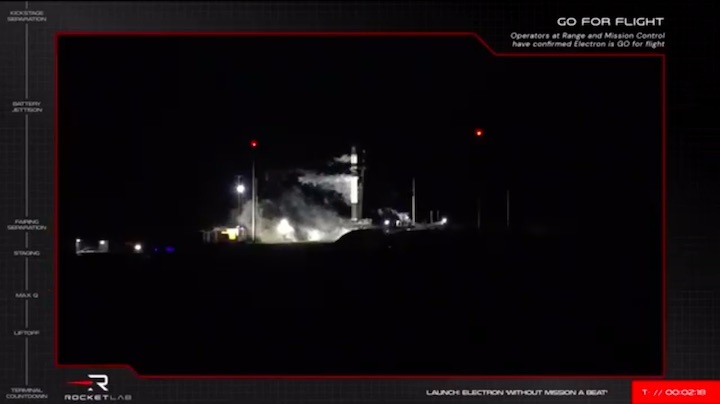
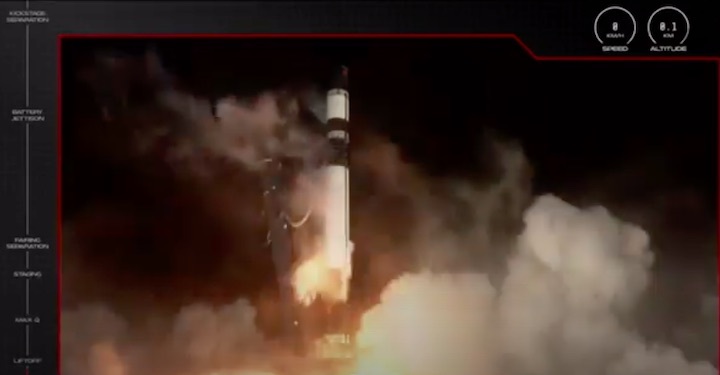
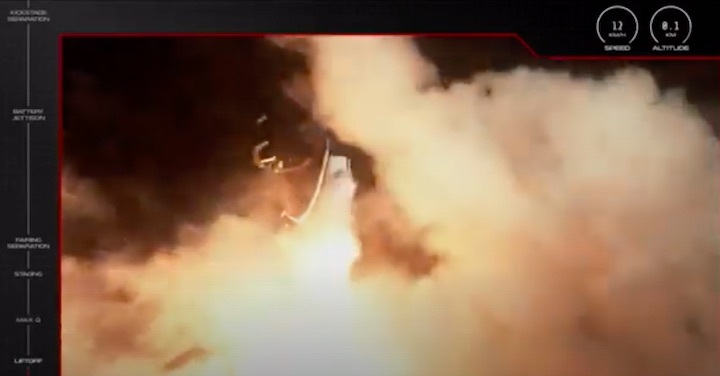
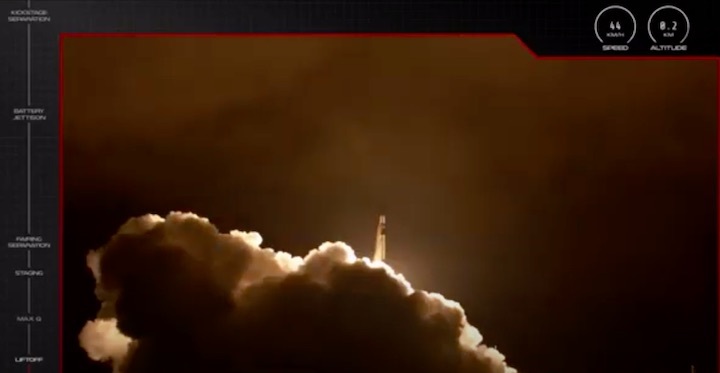
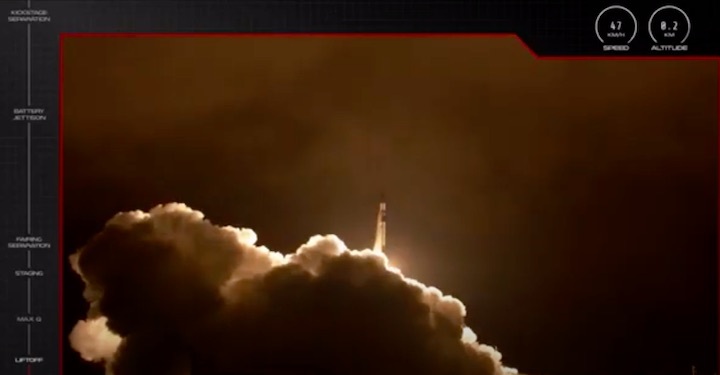
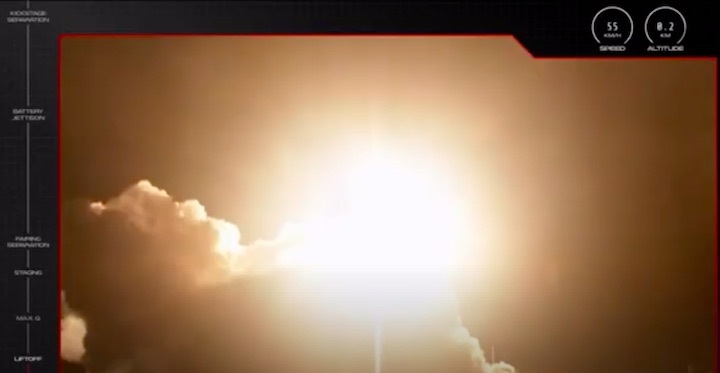
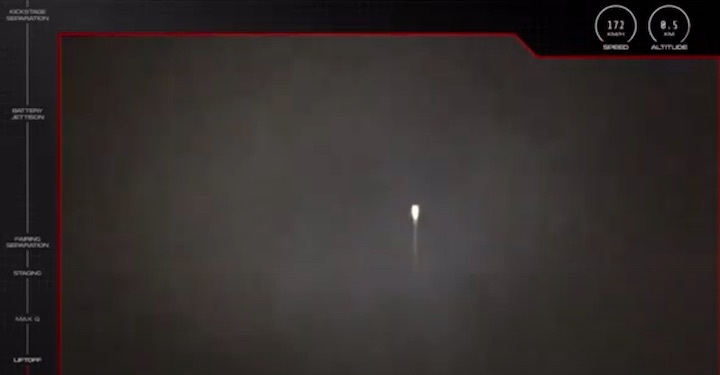
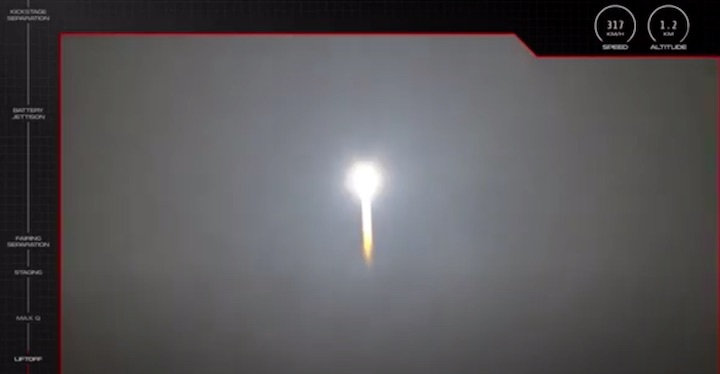
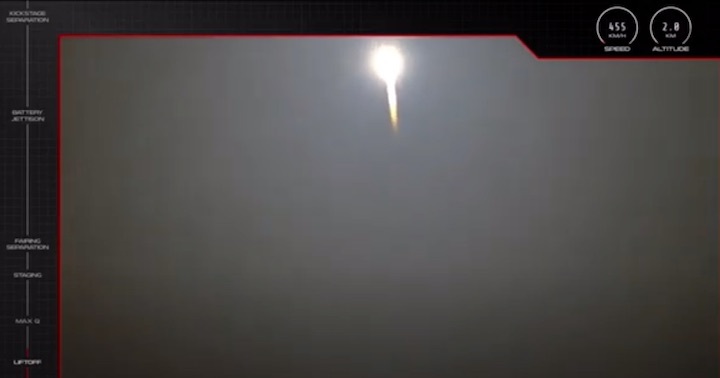
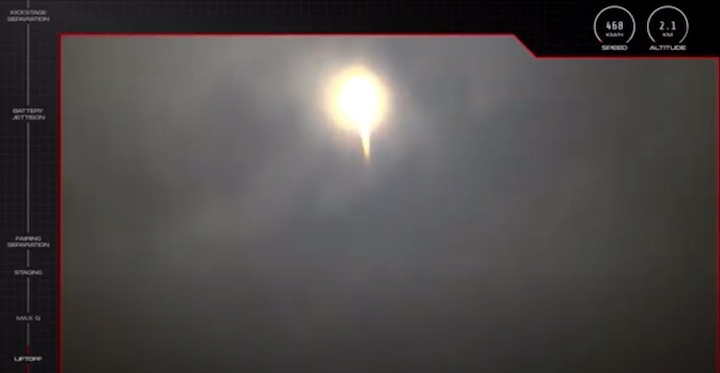
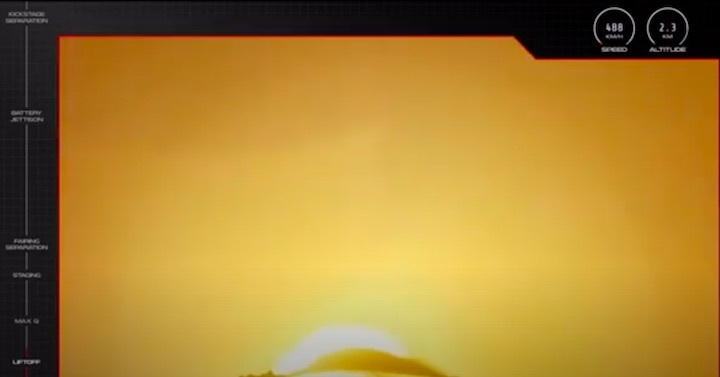
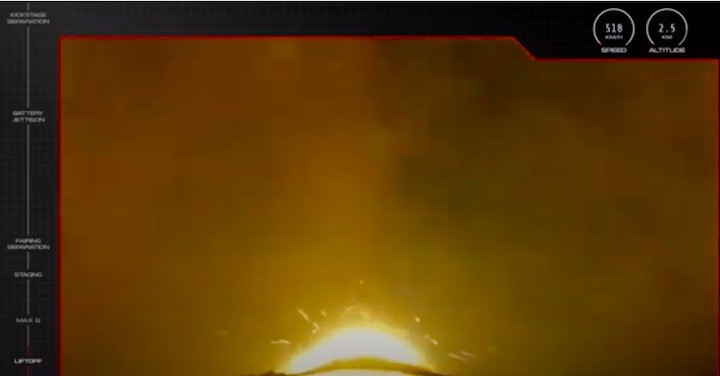
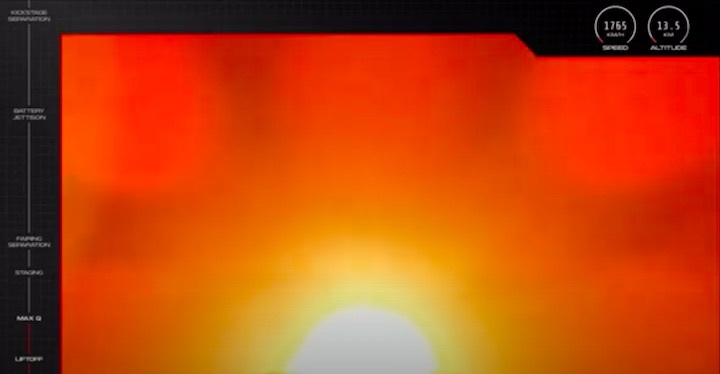
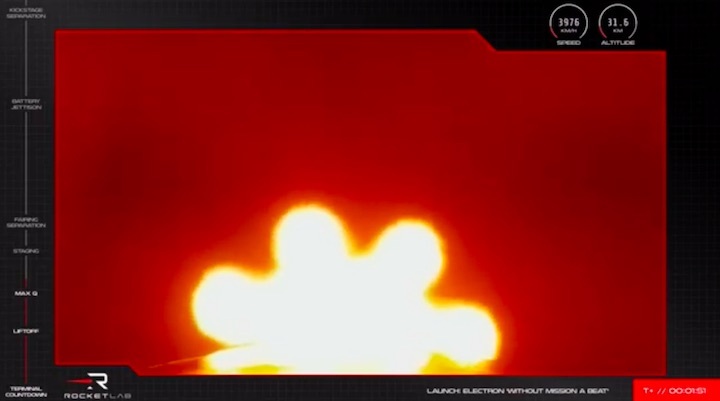
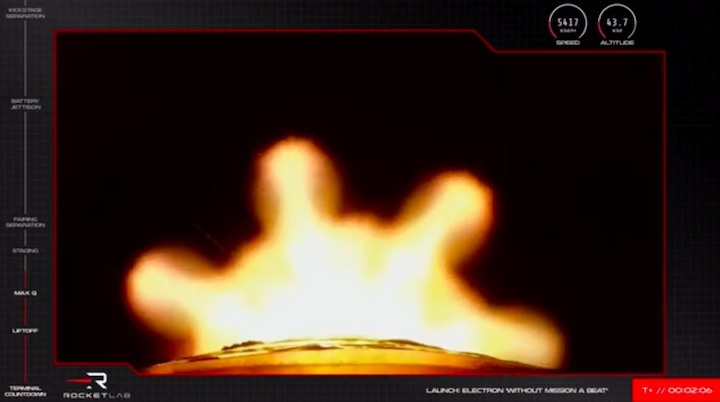
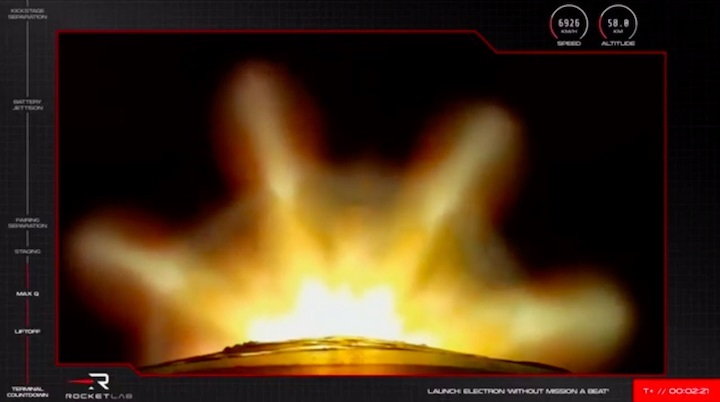
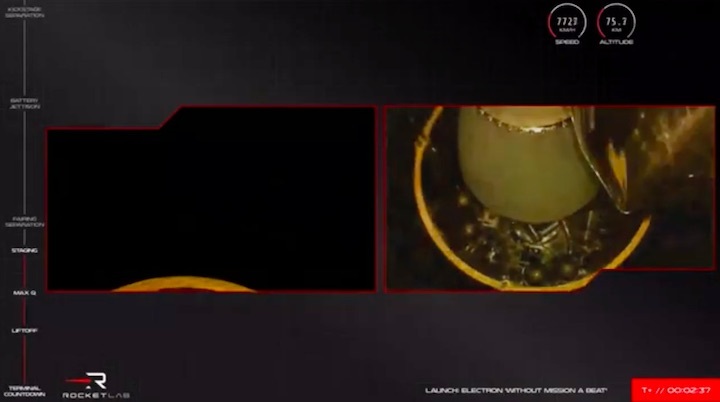
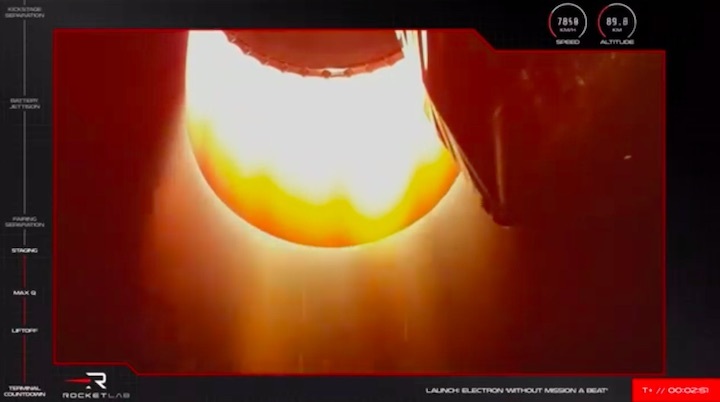
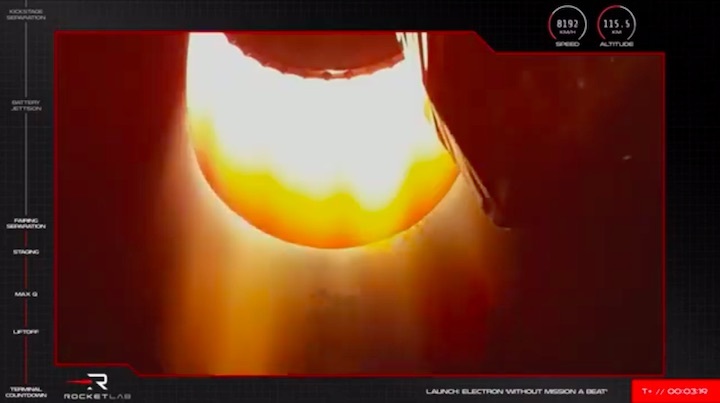
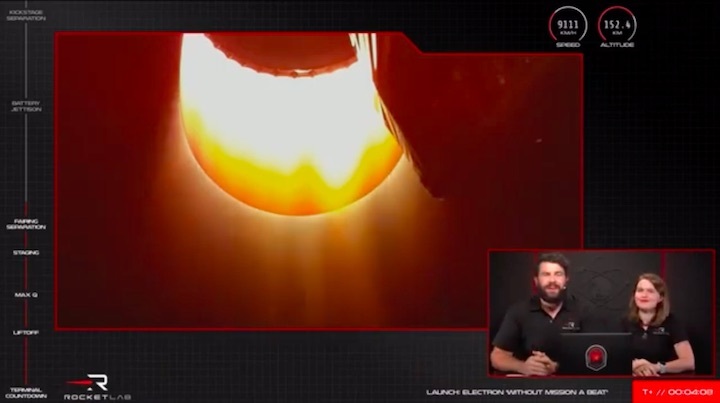
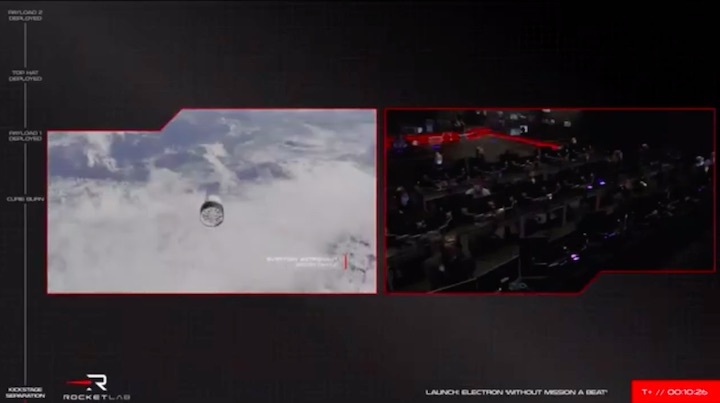
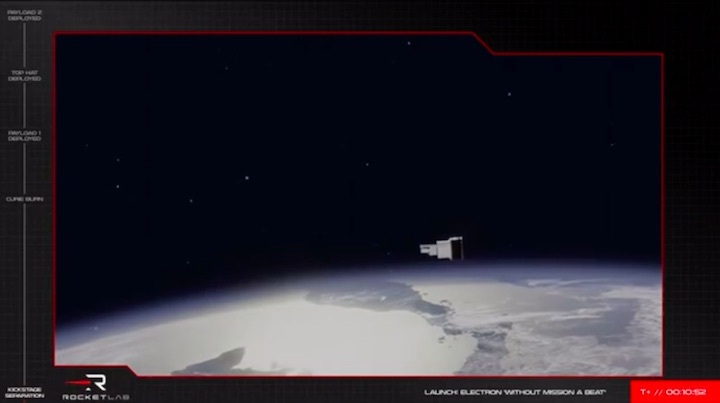
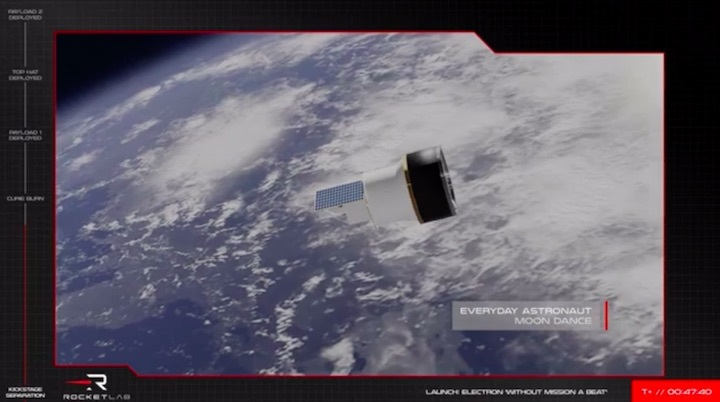
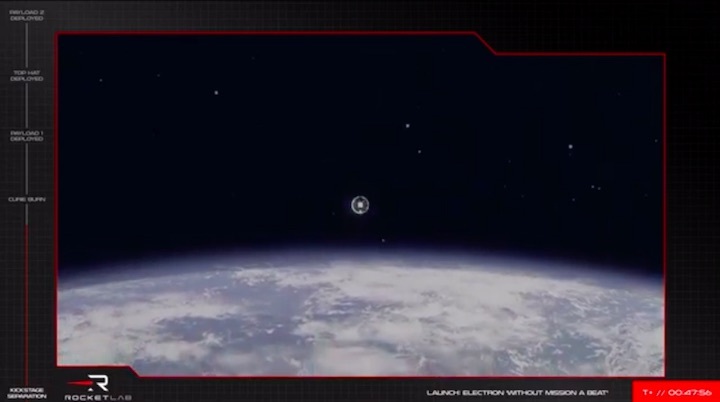
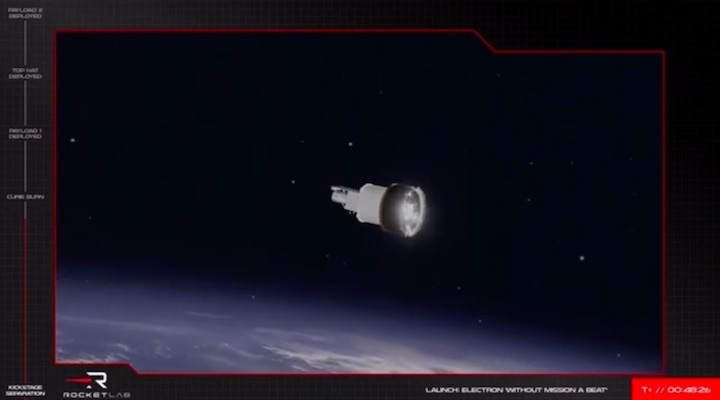
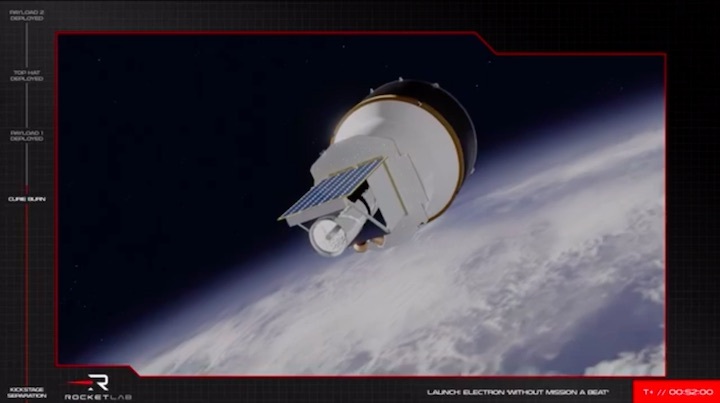
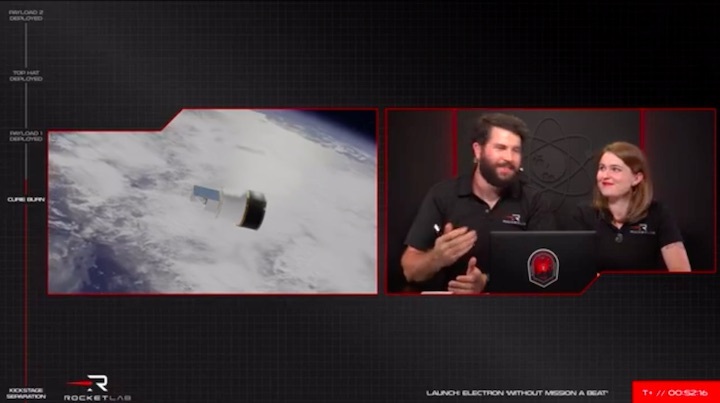
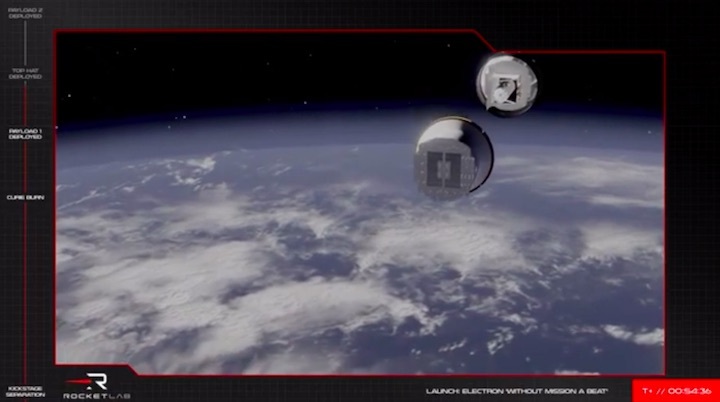
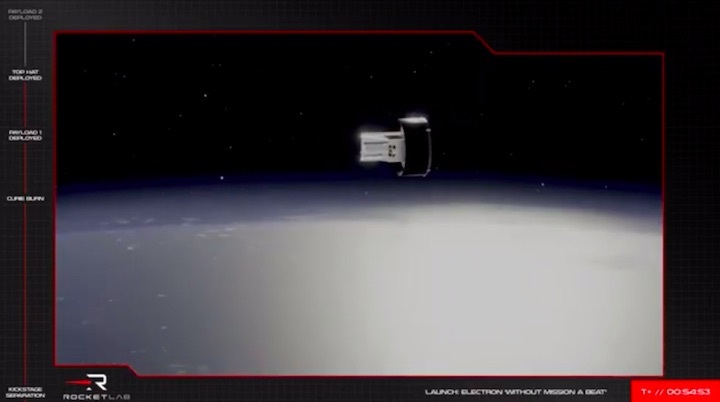
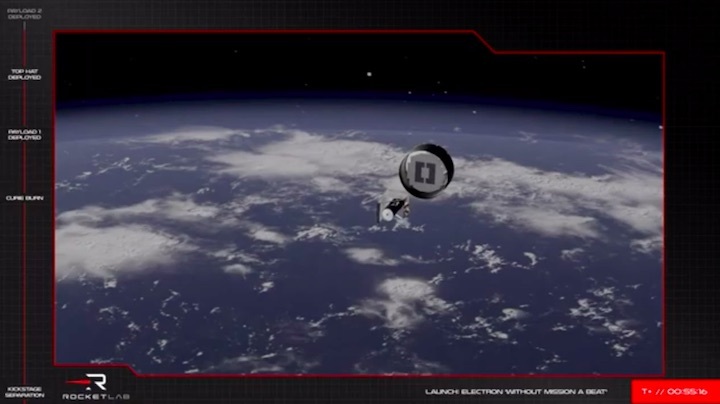
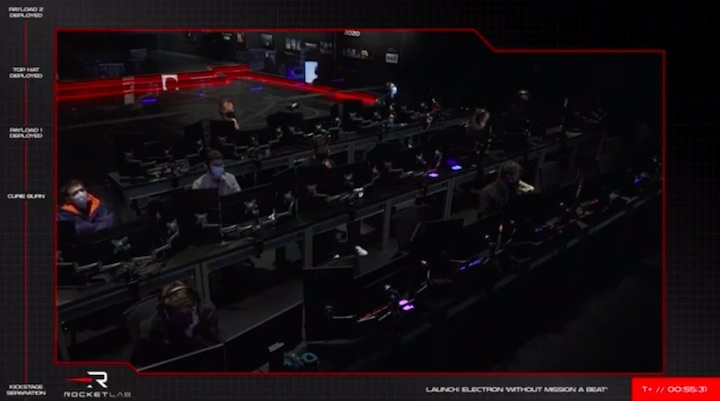
Quelle: Rocket Lab

